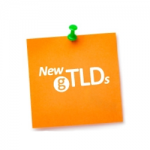
The arrival of the new gTLD .Bank has created quite a fuss in the banking industry, with thousands of financial institutions applying for this new industry-related extension.
First-up was Barclays, who announced last May they were dumping the traditional location-specific .com and .co.uk web addresses and transfering their online assets to proprietary domain names: .barclays and .barclaycard. And now we learn than more than 500 European banks and financial institutions – including Santander, Spain’s BBVA, or Rothschild – have registered to apply for the new, restricted domain name .BANK.
There’s no doubt that new extensions like .bank or .brand provide new opportunities – and new challenges – for online activities in the financial services sector but, why are the big financial institution taking such a positive approach to their new gTLDs? The main motivation behind it is digital security. Financial institutions are increasingly apprehensive of the potentiality of online scammers to use their domain names to attract and deceive unsuspecting web users, and these new gTLDs have become a great way to ensure their digital assets.
Why .Bank is the real game-changer?
The goal of the .bank domain extension is to provide a new way for financial companies to better identify their websites with their clients and boost consumer confidence. In order to achieve this, this new industry-related gTLD is only available for verified banks, credit unions, and other qualifying financial institutions. What is more, the .bank domain will be managed by a financial industry advocacy group, ensuring that all websites ending with .bank are owned by real banks conducting real business with consumers around the world.
At a consumer level, this is great news. It will create a simplified online user experience, helping the customers to identify immediately a genuine business. Also, it will make it more difficult for criminals to create bogus emails from a .bank address or mirror websites, which will reduce phishing cases and will help the genuine banks protect users private data and confidential financial information. This will, ultimately, give individuals an unprecedented level of confidence in digital banking.
It could be a long process
The transition from one domain to another, including the transfer of all the online infrastructure, is not easy and/or fast, so we may need to be patient. But, while these changes may be slow to come, the number of applications for .bank domains does indicate that banks are moving in the right direction, demonstrating their awareness of the essential need for protecting their digital assets if they are to protect their customers. And until that time comes, it is highly recommended that businesses operating in the financial industry, and who wish to protect their digital assets, reputation and customers, should invest in trademark monitoring to avoid losses from opportunistic scammers.

